During part of my four-hour run yesterday, while enjoying the blissful condition known as runner’s high, I listened to a TED talk by a really smart cognitve scientist. His main point was that ideas have a life of their own. They start small, they spread, they give birth to other ideas, they can die. An intriguing concept that makes sense. A case in point: a common belief used to be that women could not, or should not, run marathons. That their reproductive parts would fall out. That their bodies just could not handle that type of stress. Most men, and, sadly, most women believed it. Until one didn’t. And then another, and another. By the time I came of age in the 1980s, the new belief — women can, and should, run as far as men — had replaced the old one.
The idea that humans can run a lot further than 26 miles is ancient and new at the same time. Like bull riding, which, unlike other rodeo events, has no connection to actual ranch work, modern ultra running did not evolve gradually from the long tradition of road marathons. I imagine the idea that cowboys should climb on bulls was born suddenly, one Saturday night, from a volatile combination of testosterone and alcohol. Modern 100-mile running was born in a similar way, when, in 1974, Gordy Ainsleigh’s horse came up lame right before the 100-mile equestrian event known as the Tevis Cup endurance ride. A crazy flash of “What if . . . ?” hit the Western States trail like a bolt of lightning as Gordy covered the distance without his horse in just under 24 hours. An idea was born. It spread like wildfire. There was no turning back.
By 1982, the Western States field had grown to 282 runners, men and women, who had to enter through a lottery process. This explosion in popularity helped Ken Chlouber to dream up the Leadville 100 a year later. A few more 100-mile races started to populate the calendar over the next couple of decades, until Born to Run and the advent of social media ushered in the current tidal wave of selfies, beards, and trail porn. It’s easy to forget that, until just a couple of years ago, ultras were a fringe sport. It’s still a fringe sport according to many, which is part of its appeal, but it’s now a much more popular fringe sport. People still think we’re a strange bunch. At the same time, they sound more awestruck than abhorred when they tell us how weird they find us. There’s a degree of admiration mixed into the dismissive attitude. Clearly, we have arrived. We’re becoming more mainstream, with all the recognition, acceptance, but also growing pains this status brings to a new sport. The wild new idea from 1974 has gained momentum and taken hold.
And yet, it wasn’t such a new idea in 1974. Just the opposite, really. You could say that the idea is older than our species, and that we forgot about it for a number of millennia. Our distant ancestors, who moved from the trees into the open steppes, were slower than most other animals over short distances. At the same time, they had more endurance. They couldn’t outrun their prey, but they could patiently, follow it all day until it dropped from exhaustion. That’s how we evolved into modern humans. Those who ran the farthest got to eat the most. Early homo sapiens had a reason to run long distances, a tangible reward in the form of more and better food, which translated into more surviving offspring. This is how we evolved to run. It’s probably the reason we get to enjoy the strange phenomenon called runner’s high. We don’t consciously remember the days we spent running after antelope and the like during the stone age, but our subconscious still responds the same when we do it. The longer we run, the more we suffer, true. But it’s also true that something transformative happens to many of us after running all day and halfway through the night. We experience something beyond pleasure — a deep satisfaction, an inner peace, the realization that our silly, insignificant human existence is something worth celebrating. This sort of enlightenment tells me that ultra running is in our DNA, deeply connected to the essence of who we are. Maybe that’s why I do it.
My personal belief in what I am capable of has evolved, too. As a child, I did not practice any type of sport. My grades were good, so everyone — including me — believed I was smart, which, for some reason, meant that I couldn’t also be athletic. It made sense, somehow. Being both would have seemed greedy.
I was thirty by the time I started running. Once I did — but way before I considered myself a runner – I used to believe running a marathon was the ultimate test of endurance for any human, male or female. When I crossed the finish line of my first one, at the ripe old age of 32, I thought I could not run another step. A few years later, I first heard about 100 mile races. I thought it was some sort of urban legend. When I found out that some people really did run 100 miles, my belief evolved into an updated version: running 100 miles was impossible for normal people, which meant: impossible for me.
Changing that belief took a long time. I started running trail marathons, where I got to meet ultra runners. They seemed a lot more normal than I had thought. I ran a couple of 50k races, i.e. marathons plus a few extra miles, which didn’t seem like such a big deal anymore. My new friends encouraged me to sign up for a 50-miler, a distance of almost twice what I had ever run before. I started, not knowing what would happen after mile 31. I was running on blind hope, against all logic and all reason. But I discovered that there are reserves just waiting to be unlocked inside us, beyond exhaustion, beyond the wall of the marathon. I finished. The next day, I signed up for the Leadville 100. And I finished it, ten years after my first marathon. This year, at age 45, I finished three tough 100-mile races. Running 100 miles will never be easy, but I now know that I can cover the distance unless something drastic gets in the way.
Ideas can help us or hurt us. They can keep us in our comfort zones or push us to discover our potential. They can limit our lives, or help us transcend these limits. Ideas can be powerful, but they don’t happen in a vacuum. They are only powerful in the right set of circumstances. I feel lucky to live at a time when ultra running is exploding in popularity, not 50 years ago, when the idea was still in hibernation, waiting for its rebirth, .
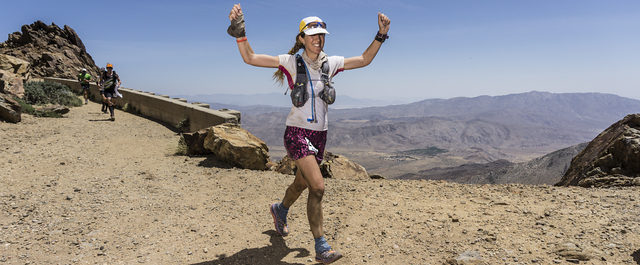
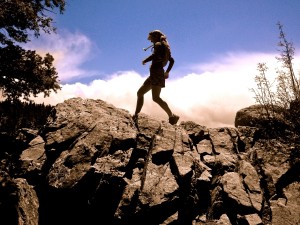
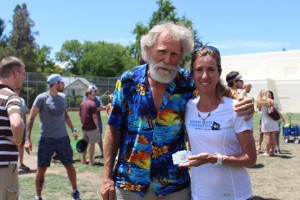
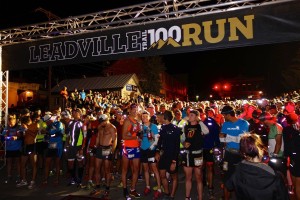
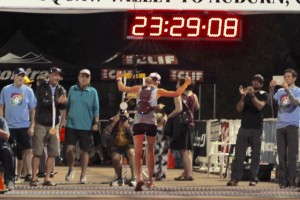

Love the history of the ultra and reading your personal timeline! I just started getting into 50k’s last year and am hooked. Looking to do a 12-hr run…50M in July! Any tips for this newbie?
Thank you, Teri! You will do great in your first 50. Advice? Let’s see . . . Pick a beautiful course — you will be on it all day. And pick a race that’s been around for a while, not an inaugural that might have problems with logistics.
So well expressed, Katrin. In my case, the very limited exposure I had to other runners, led to the idea that after running a few marathons it was “normal” to run the Leadville 100. Turned out that was a great idea.
Great post and so true…I didn’t start running until I was 45 and my goal was to just be able to run a 5K well. The more you believe, the more you can accomplish. I have no doubt about that!
Thank you! Yes, mind power is a mind-boggling thing. Good luck in all your adventures!